Marvel at how Iran's ancient past intertwines with biblical narratives, revealing profound connections that invite further exploration.
Is Iran in the Bible
You might find it surprising, but modern Iran's ancient predecessor, Persia, features prominently in the Bible. From the tales of kings and prophets to significant prophecies, the narrative threads that tie Iran to biblical history are both profound and intriguing.
The ancient lands of Elam and Media, now part of Iran, also have their stories woven into the biblical tapestry. As we explore these connections, you'll discover the ways in which these ancient civilizations have left their mark on sacred texts.
This journey into the past offers a unique lens through which to view the cultural and historical significance of Iran in a context you might not have considered before.
Key Takeaways
- Ancient Persia, corresponding to modern Iran, significantly influenced biblical narratives and prophecies.
- Biblical regions like Elam and mentions of Medes link Iran's historical areas to scriptures.
- Persian kings, such as Cyrus the Great, played crucial roles in fulfilling biblical prophecies.
- Archaeological evidence from Iran supports the historical accuracy of various biblical accounts.
Ancient Persia Explained
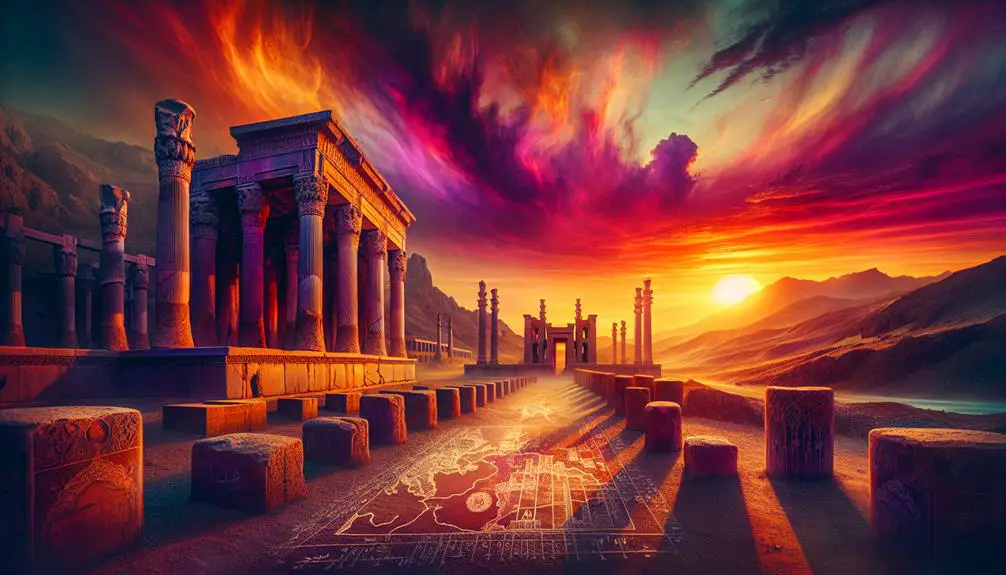
Ancient Persia, known today as Iran, was a cradle of civilization that played a pivotal role in the history of the ancient world, influencing cultures, politics, and religions far beyond its borders. At the heart of its far-reaching influence was Zoroastrianism, a religion that introduced concepts of monotheism, angels, and the dualistic nature of good and evil into the cultural and religious fabric of surrounding regions. Zoroastrian influence permeated through the Silk Road and other trade routes, acting as cultural conduits that extended Persian cultural and religious practices across Asia and into Europe.
These trade routes, vital for the exchange of goods such as silk, spices, and precious metals, also facilitated an unprecedented exchange of ideas, technologies, and religious beliefs. As merchants and travelers moved along these routes, they carried with them not only goods but also stories, philosophies, and religious practices from Persia. This exchange led to a blending of cultures and ideas, with Zoroastrianism laying foundational elements for emerging religions and influencing the philosophical outlooks and religious practices of societies along these trade networks. Through this lens, one can appreciate the profound impact Ancient Persia had on shaping the religious and cultural landscapes of the ancient world.
Elam in Biblical Context
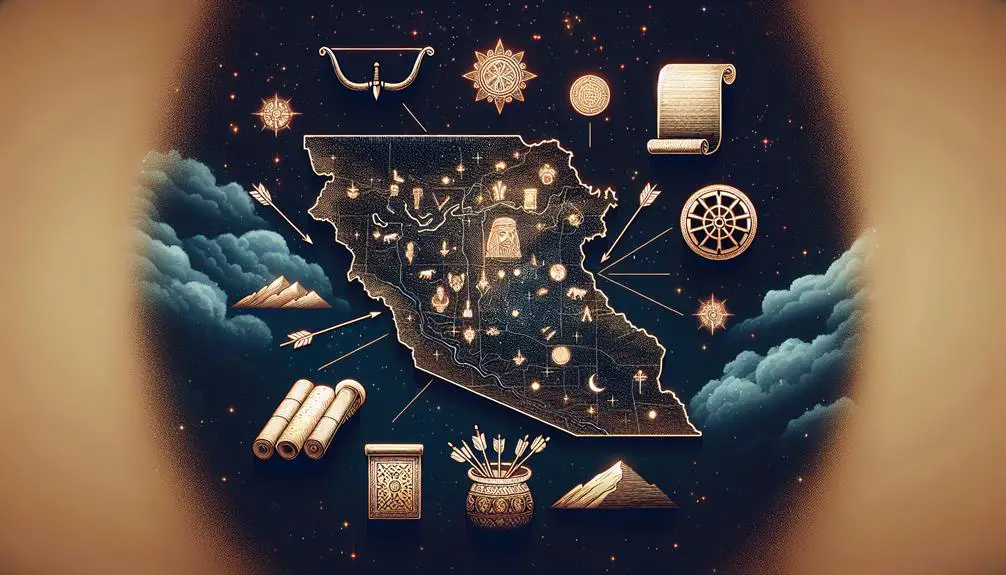
Elam, often mentioned in the Bible, plays a significant role in understanding the historical and religious interactions between the ancient Near East and the Hebrew peoples. This region, corresponding to the modern-day southwest Iran, emerges in biblical narratives as both a distinct entity and a participant in broader historical events. The Genesis mention of Elam as a son of Shem underscores its early integration into the scriptural worldview, implying a shared ancestry with the Hebrews.
Analyzing Elamite artifacts and historical records, scholars have illuminated the cultural and political significance of Elam in the Near Eastern tapestry. These findings reinforce the biblical depiction of Elam, highlighting its influence and interactions with the kingdoms of Israel and Judah. The Elamites, through their artifacts, offer tangible evidence of the complex interplay between differing civilizations and the Hebrew world.
This examination of Elam in a biblical context enriches our understanding of the ancient Near East's multifaceted society. It demonstrates the importance of Elam in the broader narrative of biblical history, providing insight into the interconnectedness of ancient peoples and the shared foundations of their cultural and religious identities.
Medes: A Biblical Presence
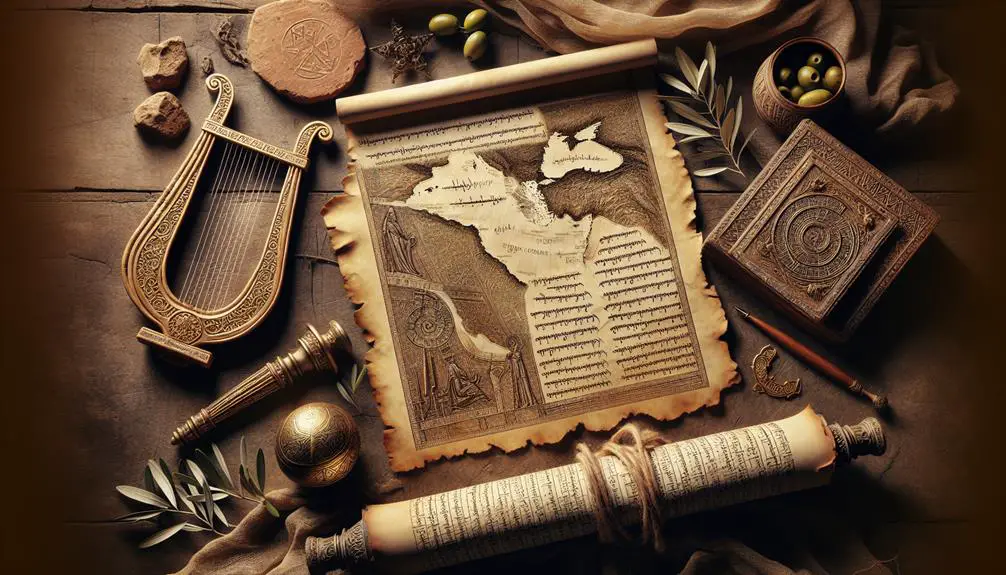
The Medes, emerging prominently in biblical narratives, further illustrate the intricate relationships between the Hebrews and their neighboring civilizations. This ancient group, known for their influence and power in the region that's now Iran, played a significant role in the historical and prophetic texts of the Bible.
To understand the biblical presence of the Medes, consider the following aspects:
- Median Laws: The Medes were known for their complex legal system, which contrasted with and sometimes influenced Hebrew legal practices. This interplay of legal traditions underscores the broader cultural exchanges between these ancient societies.
- Assyrian Conflicts: The Bible recounts various conflicts between the Assyrians and the Israelites. The Medes, as significant adversaries of the Assyrians, indirectly influenced the fate of the Hebrew people through their military campaigns. These conflicts reshaped the political landscape of the Near East, affecting the biblical narrative.
- Prophetic References: The prophets of the Old Testament often referred to the Medes in their predictions concerning the downfall of oppressive empires. These references not only highlight the Medes' historical significance but also their role in the fulfillment of biblical prophecy, separate from the later emergence of Persia.
Analyzing the Medes' presence in the Bible reveals their pivotal role in shaping the region's history and their influence on the biblical narrative.
Persia's Role in Prophecy
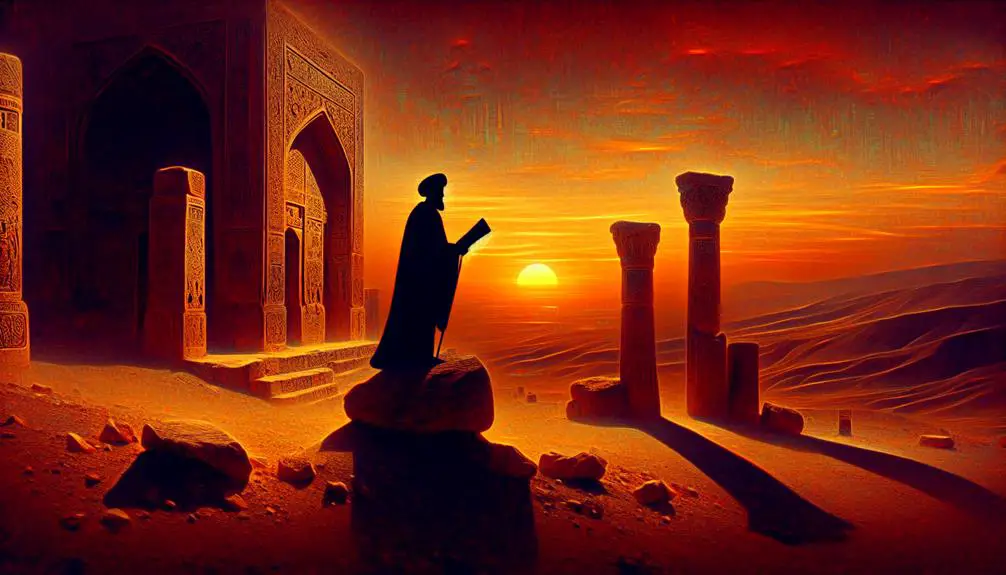
You'll find Persia's significant involvement in biblical prophecy through the actions and decrees of its leaders. Cyrus the Great's Edict, for instance, not only fulfilled a specific prophecy but also set a precedent for the role of Persian kings in scriptural narratives.
This relationship between Persia and prophecy underscores the intricate interplay between historical events and theological interpretations.
Cyrus the Great's Edict
Cyrus the Great's edict, as described in the Bible, marks a pivotal moment in biblical prophecy, highlighting Persia's instrumental role in the restoration of Jerusalem. This act not only cemented Cyrus's legacy but also initiated significant restoration efforts. To understand the impact, consider:
- Cyrus's Decree: Allowed the exiled Jews to return and rebuild Jerusalem, fulfilling prophecy.
- Restoration Efforts: Spearheaded the reconstruction of the temple, a vital step in re-establishing religious practices.
- Legacy and Prophecy: Cyrus's actions are seen as a direct fulfillment of God's promise, showcasing Persia's unique position in biblical history.
Analyzing these elements reveals the profound implications of Cyrus's edict on the historical and spiritual landscape, underscoring Persia's pivotal role in the biblical narrative.
Persian Kings in Scripture
Exploring the role of Persian kings in biblical scriptures unveils their significant impact on prophecy and Jewish history. These monarchs, especially through Darius' decree and Esther's story, show how Persia influenced the course of Jewish events and fulfilled biblical prophecies.
King |
Action |
Impact on Jewish History |
|---|---|---|
Cyrus |
Allowed Jews to return and rebuild Jerusalem's temple |
Fulfilled prophecy, reestablished worship |
Darius |
Issued decree to complete the temple |
Ensured temple's completion, supported Jews |
Xerxes (Ahasuerus) |
Esther's story unfolds in his reign |
Saved Jews from genocide, showcased God's providence |
Their decisions not only shaped their era but also affirmed the intertwined destiny of Persia and the Jewish people, marking a profound narrative of divine intervention and historical fulfillment.
Kings and Prophets
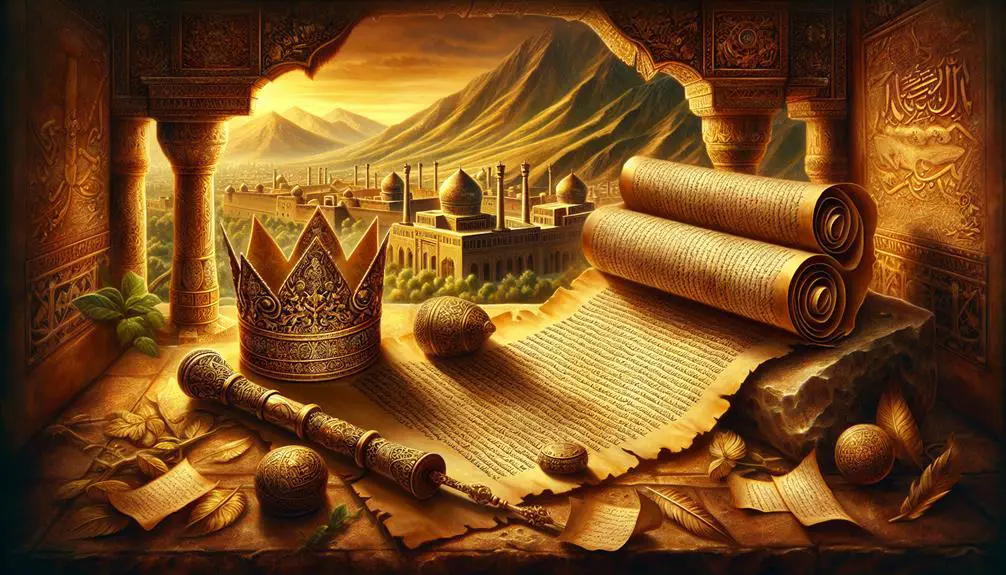
In the context of biblical narratives, several kings and prophets from the region now known as Iran play pivotal roles in shaping the events and theological developments recounted in the scriptures. These figures are central to understanding:
- Hebrew interactions: The Bible details numerous encounters between the Hebrew people and Persian rulers. These interactions often led to significant changes in the Hebrews' societal and religious landscape, illustrating the profound impact Persian leadership had on them.
- Prophet visions: Many prophets in the Bible received visions that concerned the Persian Empire. These visions often contained messages of hope and restoration for the Hebrew people, highlighting the instrumental role Persia would play in their history.
- Theological developments: The influence of Persian thought on Jewish religious practices and beliefs is undeniable. The interaction between Hebrew prophets and Persian kings facilitated a cross-cultural exchange that enriched the theological foundations of Judaism.
Analyzing these elements reveals the complexity of the relationships and the profound influence that Persian figures had on biblical history. It's crucial to understand the depth of these interactions and visions to fully grasp the significance of Iran's presence in the scriptures.
Biblical Sites in Modern Iran
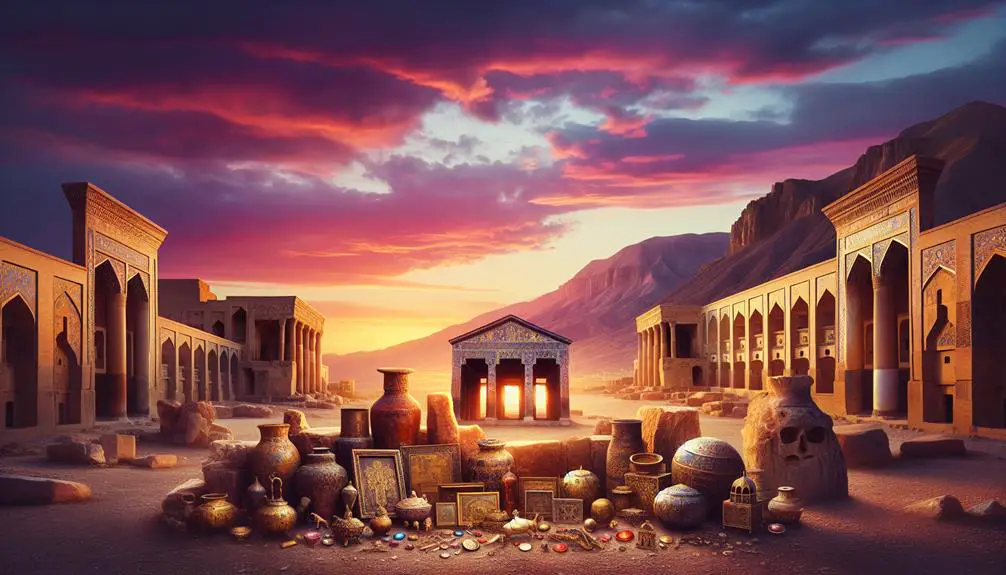
Modern Iran houses several archaeological sites that are of immense biblical significance, shedding light on narratives and figures mentioned in the scriptures. These locations serve as a bridge between the ancient texts and tangible history, allowing for a deeper understanding and appreciation of the biblical world.
Site |
Biblical Significance |
|---|---|
Susa |
Known for its Susa significance, it's linked with the stories of Daniel, Esther, and Nehemiah, offering insights into Persian culture and governance in biblical times. |
Ecbatana |
The exploration of Ecbatana provides context to its mention as a summer capital in the Bible, revealing aspects of Medo-Persian culture. |
Shushan Palace |
Closely tied to the story of Esther, this site underscores the historical setting of her narrative. |
Pasargadae |
Although not directly mentioned, it's significant for understanding Cyrus the Great's impact, mentioned in Isaiah for liberating the Jews. |
Persepolis |
Provides a backdrop to the Achaemenid Empire's role during the biblical period, especially in relation to the Book of Esther. |
These sites allow you to immerse yourself in the world where prophets walked and kings ruled, offering a unique lens through which to view the scriptures.
Archaeological Evidence
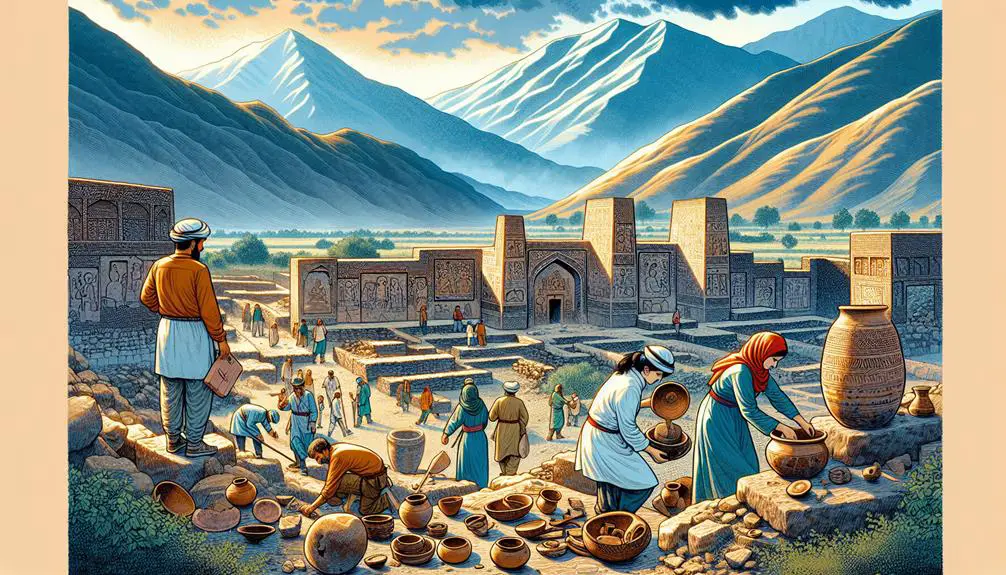
Throughout the years, archaeological digs have unearthed artifacts and inscriptions that corroborate the historical narratives found in the Bible, offering tangible evidence of its accounts. Specifically, when examining the Persian period, these discoveries have shed light on the accuracy and historical context of biblical references to what's now modern Iran. The integration of Persian artifacts and sophisticated excavation techniques has significantly advanced our understanding of this era.
Here are three key elements that contribute to the richness of archaeological evidence relating to the Bible:
- Persian Artifacts: Items such as seals, pottery, and tablets with cuneiform inscriptions have been pivotal in confirming the presence and influence of Persian culture in the biblical narrative. These objects directly tie the stories of the Bible to historical figures and events.
- Excavation Techniques: Modern archaeological methods, including stratigraphy and radiocarbon dating, have allowed researchers to accurately date Persian artifacts and thus validate the chronological accounts described in the Bible.
- Inscriptions: Epigraphic evidence from the Persian period, found on monuments and stone tablets, has provided direct corroboration of specific biblical passages, offering a textual bridge between the archaeological record and biblical texts.
These elements collectively enhance our understanding of the Bible's historical context, demonstrating the intricate relationship between archaeological findings and biblical narratives.
Frequently Asked Questions
How Do Contemporary Iranian Religious Practices Trace Their Roots Back to Biblical Times?
You'll find that contemporary Iranian religious practices have deep roots stretching back to biblical times, incorporating Zoroastrian influences and cultural festivals. These elements blend seamlessly into the fabric of modern practices.
Zoroastrianism, predating Islam, significantly shapes rituals and beliefs. Cultural festivals, often with pre-Islamic origins, continue to thrive, reflecting a rich tapestry of history.
This intricate melding showcases the enduring legacy of ancient traditions within today's Iranian society.
In What Ways Have Modern Geopolitical Events in Iran Been Interpreted in Light of Biblical Prophecy by Different Religious Groups?
You've hit the nail on the head by diving into how modern geopolitical events in Iran are seen through the lens of biblical prophecy.
Various religious groups peel back layers of geopolitical symbolism, finding apocalyptic interpretations in Iran's actions on the world stage.
They analyze tensions and conflicts, aligning them with prophetic narratives to understand the present and predict the future, maintaining a scholarly and objective stance while navigating these complex interpretations.
How Has the Translation and Interpretation of Biblical Names and Places Changed Over Time, Particularly Those Relating to Areas Within Modern Iran?
You'll find that the translation and interpretation of biblical names and places have evolved significantly, influenced by ancient cartography and manuscript evolution. This transformation is particularly noticeable for areas within modern Iran.
Scholars delve into historical texts, comparing ancient maps and evolving language to understand these changes. This scholarly pursuit uncovers how perceptions of biblical locations shift, reflecting both linguistic developments and our deepening understanding of historical geography.
What Role Do Iranian Languages, Such as Persian or Elamite, Play in the Study and Understanding of Biblical Texts?
You're diving into a linguistic treasure trove when you explore how Persian and Elamite languages illuminate biblical texts.
Imagine piecing together a mosaic; each fragment of linguistic analysis and script comparison adds depth and clarity.
These Iranian languages are essential for scholarly understanding, acting as keys to unlock ancient meanings and contexts otherwise obscured.
Through meticulous study, you'll find these languages enrich biblical scholarship, offering fresh perspectives and insights.
How Have Iranian Christians Contributed to the Broader Christian Theological Discussions, Especially in Relation to Biblical History and Prophecy?
You'll find that Iranian Christians have significantly contributed to broader Christian theological discussions, focusing on church growth and persecution resilience. Their unique perspective, deeply rooted in a region with rich biblical history and prophecy, enriches understanding and interpretation.
They've effectively bridged ancient biblical contexts with contemporary issues, strengthening the global church's theology and practice. Their experiences under persecution have especially underscored the importance of faith resilience, inspiring Christians worldwide.
Conclusion
In conclusion, Iran's biblical tapestry is nothing short of a cosmic saga, woven with threads of ancient empires and prophetic destinies. Through the lens of history, Elam's mystique, the Medes' shadowy presence, and Persia's grandeur in prophecy illuminate a narrative so enthralling, it could eclipse the greatest of epics.
Kings and prophets tread upon this land, leaving footprints that turned to stone, still whispering tales amidst Iran's ruins. The archaeological evidence stands as a testament, a silent witness to a celestial drama played out on Earth's stage.



Sign up